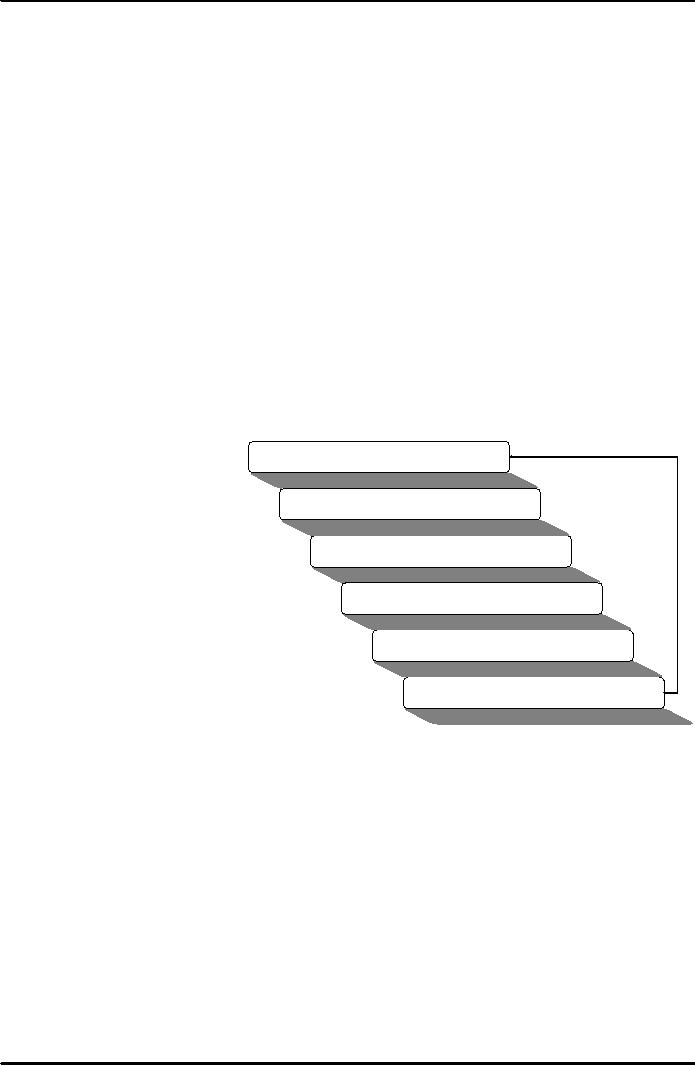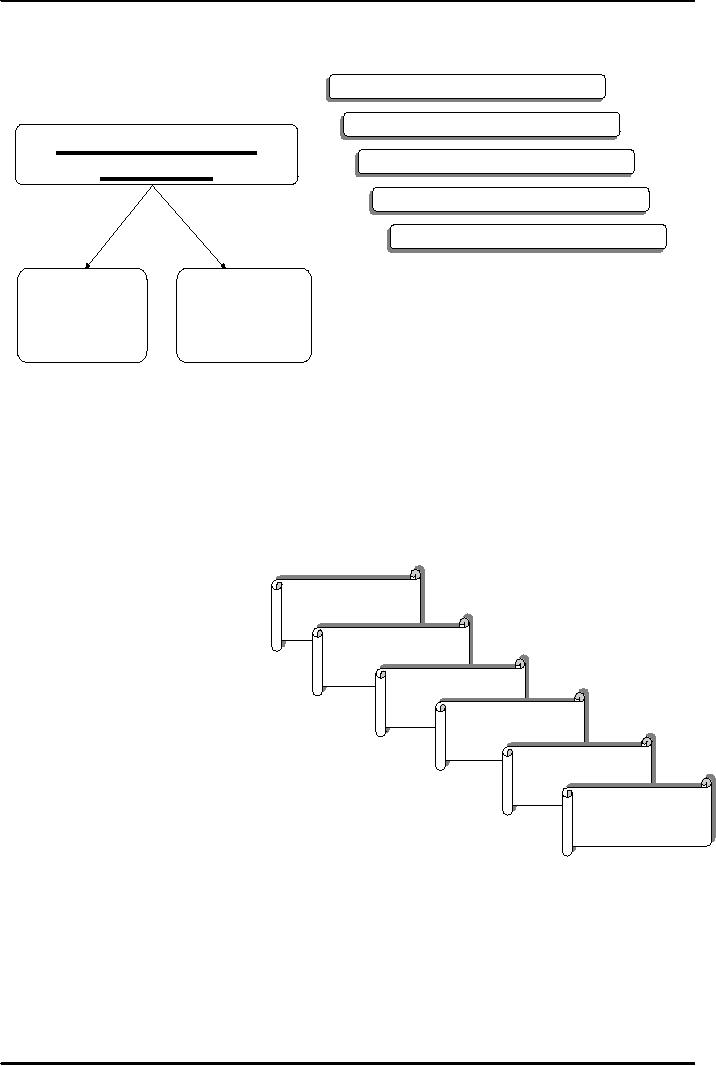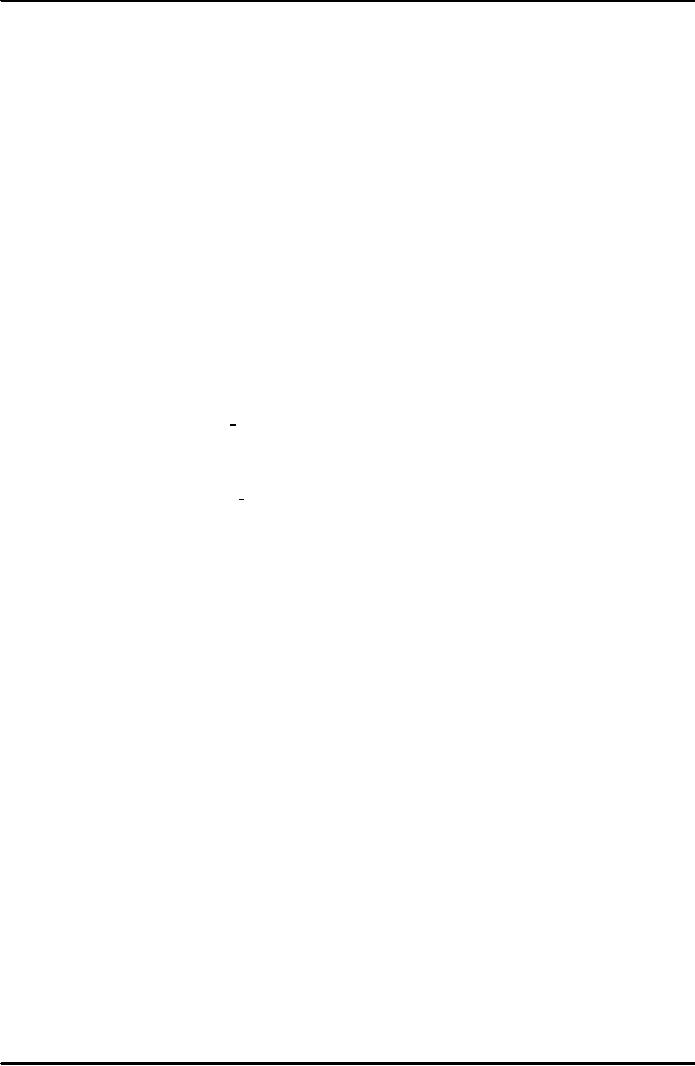 |
RESEARCH METHODS IN PSYCHOLOGY (I):Scientific Nature of Psychology |
| << THE HUMANISTIC APPROACH AND THE COGNITIVE APPROACH:Rogers’ Approach |
| RESEARCH METHODS IN PSYCHOLOGY (II):Experimental Research >> |

Introduction
to Psychology PSY101
VU
Lesson
8
RESEARCH
METHODS IN PSYCHOLOGY (I)
Scientific
method in psychology
The
scientific method is an approach
that practitioners of psychology
are interested in
for
assessing,
measuring, and predicting
behavior. It is the process of
appropriately framing
and
properly
answering questions. It is used by
psychologists and those
engaged in other
scientific
disciplines,
to come to an understanding about
the world.
Scientific
Nature of Psychology
�
Psychology
is a science
�
Science:
An
approach using the scientific method for
the observation, description,
understanding,
and prediction of any
phenomenon.
�
Scientific
method: The
procedure employing a systematic, pre
defined, series of steps
for
attaining
optimal efficiency, accuracy, and
objectivity in investigating the problem of
interest
�
Systematic:
it
follows a specified system, an
organized ways of collecting and
tabulating
information.
�
Pre
defined series of steps: certain
steps following a specific
sequence that is not to
be
altered;
disruption of the sequence will
ruin the essence of the
approach
�
Objectivity:
It is
unbiased; the researcher's likes
and dislikes do not
interfere with the study
or
its
findings
Identifying
a research problem
Steps
of Scientific Method
Review
of related literature
1.
Identifying the research
problem
The
most important step
while
conducting
research is identify and
specify
Formulation
of a hypothesis
the
area of interest in which
one is going to
conduct
a research. The research
problem can
be
identified in many ways,
including personal Designing
&conducting the research
interest,
brainstorming, scientific developments,
knowledge
etc.
Analysis
of data
2.
Review
of the related
literature
Searching
the research findings in relation
with the
research
one is going to conduct, in order to see
how
Drawing
conclusions
others
approached the same or similar
issues. Also, it can
give
some idea as to what would be the
probable outcome of
one's
research.
3.
Formulation of hypotheses
A
hypothesis is a speculative statement
about the relationship between two or
more variables. By reviewing
the
related literature, one is able to
formulate the hypotheses pertaining to
the variables of interest.
Reviewing
the related research articles
helps one formulate various
hypotheses.
4.
Designing and conducting the
research
After
reviewing the related literature and making
hypotheses, the research is conducted by
using different
strategies
such as Questionnaires, mail interviews, telephonic
interviews, face to face interviews etc.
A
variety
of research designs is available to the
researchers, who can choose
the one that best suits
their study.
5.
Analysis of data
After
collecting information, the data will be
tabulated with the help of statistical
methods and
computation
in
order to see whether the finding prove or
disprove the hypotheses.
6.
Drawing conclusions
Conclusions
are drawn after the statistical analysis
of data. On the basis of this, a
decision is made about the
rejection
or acceptance of the hypothesis.
49

Introduction
to Psychology PSY101
VU
Identifying
a Research Problem
Research
problems can be identified in a number of
ways:
Perrsonalliintterrestt&
obserrvattiion
Pe
sona n e es & obse va on
Brraiinsttorrmiing
B
a ns o m ng
Research
Methods in
Reviiew
offRellatted
Liitterratturre
Rev
ew o Re a ed L e a u e
Psychology
TechnollogiicallAdvancementt
Techno
og ca Advancemen
Requesttffrrom
Concerrned
quarrtterrs
Reques
om Conce ned qua e
s
Non-manipulative/
Manipulative/
Descriptive
experimental
Methods
Methods
Non-manipulative/descriptive
Methods
The
methods in which the phenomenon of
interest is studied the way it
exists in nature. The
researcher
does
not interfere with the
events, and acts as a
passive recorder.
Manipulative/Experimental
Methods
The
methods that is responsible
for the scientific nature of psychology. In
these methods the
researcher
exercises
control over the variables
and events. He may introduce
variables of interest, or may
withhold
them.
These methods are used
for determining cause and effect
relationships.
Descriptive
Research Methods
Obserrvattion
Obse
v
a
ion
a)
Observation
Corrrelational
Co
relational
�
Systematic
observation is
Researrch
Resea
ch
used;
one of the methods
most
frequently employed by
Surrveys
Su
veys
anthropologists,
sociologists and
Unobttrusive
Unob
rusive
ethnologists.
Metthods
Me
hods
�
Phenomenon of
interest is observed,
studied,
and the observations are
recorded.
Case
Sttudies
Case
S udies
�
The
recorded observations are
analyzed.
Focus
grroups,
Focus
g oups,
�
Conclusions
are drawn on the basis of
analysis.
Metta
Me
a
anallysis
ana
ysis
Types
of observation
1.
Observation without Intervention
2.
Observation with Intervention
Observation
without Intervention
1.
Naturalistic Observation
Type
of observation in which the phenomenon of interest is
studied/observed in the natural setting
without
any
interference by the observer; The
observer may make narrative
records, take field notes,
use audio or
video
equipment, or may use a combination of
some or all
strategies.
50

Introduction
to Psychology PSY101
VU
Observation
with Intervention
The
observer intervenes, and
manipulates the situation, events and/or
variables in order
to:
�
Create
a situation which does not
occur frequently
�
Test
the impact of variables on
behavior
�
Gain
access to a situation that is otherwise
not accessible or open to
observation
Types
of "Observation with
Intervention"
1.
Participant Observation
2.
Structured Observation
3.
Field experiments
1.
Participant Observation
The
observer becomes a part of the
situation and plays an
active and significant role in
the
situation,
event, or context under study. It can be
of two types:
�
Disguised
Participant Observation
�
Undisguised
Participant Observation
2.
Structured Observation
�
Employed
when the researcher intends to study a situation,
which occurs infrequently or
is
inaccessible
otherwise.
�
The
observer may "create" a situation or
initiate it.
�
The
control exercised by the observer is
less than that in many other
techniques.
�
Mostly
employed by clinical and developmental
psychologists.
3.
Field Experiments
�
Experiments
in the natural setting; the degree of
control is far less than
that in laboratory
experiments.
�
One or
more independent variables are
manipulated in the natural setting in order to see
their
impact
on behavior.
�
Confederate:
the
researcher is assisted by one or
more confederates who behave
in a pre-
planned
manner so as to initiate an experimental
condition.
b)
Correlation Research
A
method used for identifying
predictive relationships among
naturally occurring
variables
Correlation
Can
be said to exist when two
different measures of the
same individuals, objects, or events
vary
together
e.g. Relationship between I.Q.
score & academic achievement
or
entry
test marks &
academic
achievement.
Correlation
is a statistical concept.
Nature
of Correlation
�
Positive
Correlation
�
Negative
Correlation
�
Zero
Correlation
Measures
in Correlation Research
Questionnaires:
can
be used in- person, can be mailed, or
used via Internet.
Interviews:
can be personal and face-to-face, or
telephonic.
Official
Record: Official
statistics, raw data, crime
records etc.
Remember!!!
Correlation is not causation
51

Introduction
to Psychology PSY101
VU
C.
Surveys
Most
frequently used method for
obtaining information quickly
and evaluating people's
interest,
liking,
disliking and opinions
without indulging in long-
term procedures and
techniques. It is also
easily
used because it is a cheap
method and information is
gathered without much
difficulty.
�
Surveys
consist of presenting a series of
questions or statements to the participants,
and asking
them
to respond.
�
Surveys
are used when quick
information is required in limited time
e.g. opinion polls,
product
preference.
�
Also
useful when information is required
from a large number of people e.g.
population census
�
More
suitable when the goal of the
study is to find out about
public opinion,
attitudes,
preferences,
likes and dislikes
etc
Sources
of data/information in Surveys
�
Questionnaires:
in
person, mailed,
internet
�
Interviews:
personal,
telephonic
�
Newspaper
Surveys
Steps
involve in conducting the research:
There
are mainly five steps, which
are essential while
conducting
surveys i.e.,
Conceiving
the problem: The
purpose of the study must be carefully
thought out and
precisely
i.
defined.
How is the information to be used?
From whom it is obtained?
What kind of
information
to
be gathered etc.
Designing
the instrument: There
are numerous ways by which
information can be gathered
form
ii.
the
general public such as
mailed questionnaires, telephonic interviews,
through internet etc.
It
must
be carefully thought that which
procedure is most effective in obtaining
the needed
information.
iii.
Sampling
the population: The
problem of obtaining a representative
sample of the population is
one
of the most difficult as well as
significant in the field of measuring
popular reactions.
The
sample
to be studied must be drawn in such a
manner the each individual
has an equal chance
of
being
selected, and that the drawing of
one does not influence the
chances of any other
being
drawn.
With this procedure, each
age, sex, income, religious
and ethnic group in the population
will
be
proportionately represented in the
sample. Off course there
are a number of ways of
properly
drawing
a sample.
iv.
Conducting
interviews: Even
when the questions are carefully worded
and carefully designed, a
poor
interviewer can bias the
results. Experiments have shown
that females are the
best
interviewers:
at least 21 years of age,
who like people, who are
unbiased, who are good
listeners,
who
have some college education,
and who are fairly
familiar with the section they
are working in.
v.
Interpreting
the results: Even
when all the findings are
carried out properly, there
is always a
chance
of misinterpreting the results. Errors in
questionnaires, statistical methods,
and
investigator's
own subjectivity can easily
bias the results
d.
Unobtrusive Measures of
Behavior
�
Indirect
ways of data
collection
�
The
person/s who are the focus
of interest may not be
present at the time of investigation
�
May
be used for supplementing information
collected through observation
�
May
be used as a replacement of
observation
�
In
situations where direct observation is
not possible
52

Introduction
to Psychology PSY101
VU
Unobtrusive
measures of behavior
include:
i.
Archival data
ii.
Physical Traces
i.
Archival
data
Already
existing records, documents, different
forms of literature, newspaper items,
photographs,
movies,
documentaries, biographies, autobiographies
etc are used as evidence/
information e.g.
using
newspaper records to study the
rate of crime during the
past 20 years. May be used
to
supplement
data gathered through other
sources
ii.
Physical
Traces
Remains,
remnants, fragments, objects
and products of past
behavior are used as
evidence; usually
employed
to supplement data from
other sources.
Physical
traces can be of two
types
i.
Use
traces
ii.
Products
Use
traces
Cues
to the use or nonuse of objects
and items provide significant
evidence e.g. wall chalking, graffiti on
walls of
public
places, milk cartons or
tissue boxes in the garbage
bags
Products
Study
of products, tools, weapons, sculpture
etc used less frequently
than physical traces
53
Table of Contents:
- WHAT IS PSYCHOLOGY?:Theoretical perspectives of psychology
- HISTORICAL ROOTS OF MODERN PSYCHOLOGY:HIPPOCRATES, PLATO
- SCHOOLS OF THOUGHT:Biological Approach, Psychodynamic Approach
- PERSPECTIVE/MODEL/APPROACH:Narcosis, Chemotherapy
- THE PSYCHODYNAMIC APPROACH/ MODEL:Psychic Determinism, Preconscious
- BEHAVIORAL APPROACH:Behaviorist Analysis, Basic Terminology, Basic Terminology
- THE HUMANISTIC APPROACH AND THE COGNITIVE APPROACH:Rogers’ Approach
- RESEARCH METHODS IN PSYCHOLOGY (I):Scientific Nature of Psychology
- RESEARCH METHODS IN PSYCHOLOGY (II):Experimental Research
- PHYSICAL DEVELOPMENT AND NATURE NURTURE ISSUE:Nature versus Nurture
- COGNITIVE DEVELOPMENT:Socio- Cultural Factor, The Individual and the Group
- NERVOUS SYSTEM (1):Biological Bases of Behavior, Terminal Buttons
- NERVOUS SYSTEM (2):Membranes of the Brain, Association Areas, Spinal Cord
- ENDOCRINE SYSTEM:Pineal Gland, Pituitary Gland, Dwarfism
- SENSATION:The Human Eye, Cornea, Sclera, Pupil, Iris, Lens
- HEARING (AUDITION) AND BALANCE:The Outer Ear, Auditory Canal
- PERCEPTION I:Max Wertheimer, Figure and Ground, Law of Closure
- PERCEPTION II:Depth Perception, Relative Height, Linear Perspective
- ALTERED STATES OF CONSCIOUSNESS:Electroencephalogram, Hypnosis
- LEARNING:Motor Learning, Problem Solving, Basic Terminology, Conditioning
- OPERANT CONDITIONING:Negative Rein forcer, Punishment, No reinforcement
- COGNITIVE APPROACH:Approach to Learning, Observational Learning
- MEMORY I:Functions of Memory, Encoding and Recoding, Retrieval
- MEMORY II:Long-Term Memory, Declarative Memory, Procedural Memory
- MEMORY III:Memory Disorders/Dysfunctions, Amnesia, Dementia
- SECONDARY/ LEARNT/ PSYCHOLOGICAL MOTIVES:Curiosity, Need for affiliation
- EMOTIONS I:Defining Emotions, Behavioral component, Cognitive component
- EMOTIONS II:Respiratory Changes, Pupillometrics, Glandular Responses
- COGNITION AND THINKING:Cognitive Psychology, Mental Images, Concepts
- THINKING, REASONING, PROBLEM- SOLVING AND CREATIVITY:Mental shortcuts
- PERSONALITY I:Definition of Personality, Theories of Personality
- PERSONALITY II:Surface traits, Source Traits, For learning theorists, Albert Bandura
- PERSONALITY III:Assessment of Personality, Interview, Behavioral Assessment
- INTELLIGENCE:The History of Measurement of Intelligence, Later Revisions
- PSYCHOPATHOLOGY:Plato, Aristotle, Asclepiades, In The Middle Ages
- ABNORMAL BEHAVIOR I:Medical Perspective, Psychodynamic Perspective
- ABNORMAL BEHAVIOR II:Hypochondriasis, Conversion Disorders, Causes include
- PSYCHOTHERAPY I:Psychotherapeutic Orientations, Clinical Psychologists
- PSYCHOTHERAPY II:Behavior Modification, Shaping, Humanistic Therapies
- POPULAR AREAS OF PSYCHOLOGY:ABC MODEL, Factors affecting attitude change
- HEALTH PSYCHOLOGY:Understanding Health, Observational Learning
- INDUSTRIAL/ORGANIZATIONAL PSYCHOLOGY:‘Hard’ Criteria and ‘Soft’ Criteria
- CONSUMER PSYCHOLOGY:Focus of Interest, Consumer Psychologist
- SPORT PSYCHOLOGY:Some Research Findings, Arousal level
- FORENSIC PSYCHOLOGY:Origin and History of Forensic Psychology